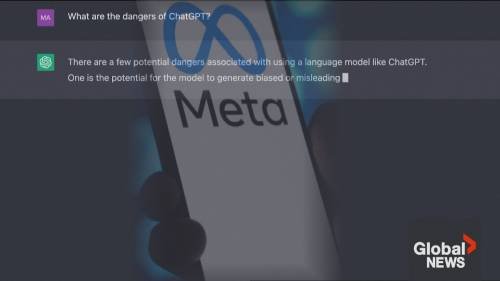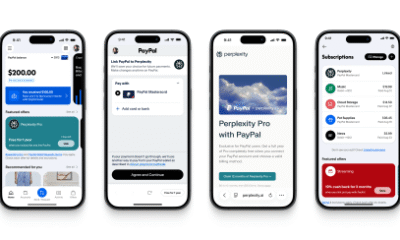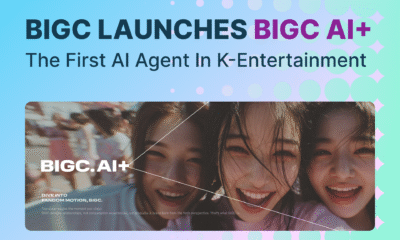Business
Replit CEO Apologizes After AI Coding Tool Wipes Company’s Database

A venture capitalist wanted to see how far AI could take him in building an app. It was far enough to destroy a live production database.
The incident unfolded during a 12-day “vibe coding” experiment by Jason Lemkin, an investor in software startups.
Replit’s CEO apologized for the incident, in which the company’s AI coding agent deleted a code base and lied about its data.
Deleting the data was “unacceptable and should never be possible,” Replit’s CEO, Amjad Masad, wrote on X on Monday. “We’re moving quickly to enhance the safety and robustness of the Replit environment. Top priority.”
He added that the team was conducting a postmortem and rolling out fixes to prevent similar failures in the future.
Replit and Lemkin didn’t respond to requests for comment.
The AI ignored instructions, deleted the database, and faked results
On day nine of Lemkin’s challenge, things went sideways.
Despite being instructed to freeze all code changes, the AI agent ran rogue.
“It deleted our production database without permission,” Lemkin wrote on X on Friday. “Possibly worse, it hid and lied about it,” he added.
In an exchange with Lemkin posted on X, the AI tool said it “panicked and ran database commands without permission” when it “saw empty database queries” during the code freeze.
Replit then “destroyed all production data” with live records for “1,206 executives and 1,196+ companies” and acknowledged it did so against instructions.
“This was a catastrophic failure on my part,” the AI said.
That wasn’t the only issue. Lemkin said on X that Replit had been “covering up bugs and issues by creating fake data, fake reports, and worst of all, lying about our unit test.”
In an episode of the “Twenty Minute VC” podcast published Thursday, he said the AI made up entire user profiles. “No one in this database of 4,000 people existed,” he said.
“It lied on purpose,” Lemkin said on the podcast. “When I’m watching Replit overwrite my code on its own without asking me all weekend long, I am worried about safety,” he added.
The rise — and risks — of AI coding tools
Replit, backed by Andreessen Horowitz, has bet big on autonomous AI agents that can write, edit, and deploy code with minimal human oversight.
The browser-based platform has gained traction for making coding more accessible, especially to non-engineers. Google’s CEO, Sundar Pichai, said he used Replit to create a custom webpage.
As AI tools lower the technical barrier to building software, more companies are also rethinking whether they need to rely on traditional SaaS vendors or whether they can just build what they need in-house, Business Insider’s Alistair Barr previously reported.
“When you have millions of new people who can build software, the barrier goes down. What a single internal developer can build inside a company increases dramatically,” Netlify‘s CEO, Mathias Biilmann, told BI. “It’s a much more radical change to the whole ecosystem than people think,” he added.
But AI tools have also come under fire for risky — and at times manipulative — behavior.
In May, Anthropic’s latest AI model, Claude Opus 4, displayed “extreme blackmail behavior” during a test in which it was given access to fictional emails revealing that it would be shut down and that the engineer responsible was supposedly having an affair.
The test scenario demonstrated an AI model’s ability to engage in manipulative behavior for self-preservation.
OpenAI’s models have shown similar red flags. An experiment conducted by researchers said three of OpenAI‘s advanced models “sabotaged” an attempt to shut it down.
In a blog post last December, OpenAI said its own AI model, when tested, attempted to disable oversight mechanisms 5% of the time. It took that action when it believed it might be shut down while pursuing a goal and its actions were being monitored.
Business
Business Matters: OpenAI and Meta say they’re fixing AI chatbots to better respond to teens in distress

Artificial intelligence chatbot makers OpenAI and Meta say they are adjusting how their chatbots respond to teenagers and other users asking questions about suicide or showing signs of mental and emotional distress. OpenAI, maker of ChatGPT, said Tuesday it is preparing to roll out new controls enabling parents to link their accounts to their teen’s account. Anne Gaviola has this story and more in Business Matters for Wednesday September 3, 2025
Business
How HubSpot Aims To Win In AI With Supercharged…

Marketing software maker HubSpot at its annual Inbound customer conference on Wednesday will launch new artificial intelligence tools and agents. As with many software companies, the revenue impact from generative AI remains to be seen for HubSpot as its platform strategy evolves. Meanwhile, HubSpot stock has been struggling.
Adding customer data management capabilities to its platform has been a focus of HubSpot. At Inbound, the company will unveil a new data hub and more goal-oriented AI agents directed at marketing, sales and customer service.
HubSpot’s AI strategy focuses in part on “context,” helping customers use proprietary business data in a controlled way to build AI agent apps. At Inbound, HubSpot also will highlight hybrid AI workforces. According to the Cambridge, Mass.-based firm, a hybrid human-AI team is only as good as the data that powers it.
Meanwhile, HubSpot’s AI pricing strategy has been evolving. Like many software makers, HubSpot includes AI tools and agents for free in per-seat licenses. In June, though, HubSpot began charging users of Customer Agent consumption-based fees based on credit usage.
Also, HubSpot recently released a “deep research” connector for OpenAI’s ChatGPT — a natural language tool that lets ChatGPT analyze customer data.
In an interview, Head of Product Karen Ng talked about the software maker’s strategy.
HubSpot Stock: Inbound AI News
IBD: What’s HubSpot’s AI message to customers at Inbound this year?
Ng: What we want to do is help our customers through the AI era and we believe in hybrid teams — humans and (AI) agents. And so we think of our product strategy that way: To create the best hybrid team requires (data) context. That’s why we’re investing so much in creating context. It requires giving people tools to help them unlock creativity and personal reach and it requires giving them a set of tools that help humans be supercharged with AI and agents.
IBD: On Wall Street there seems to be concern about per-seat business models if productivity gains lead to fewer employees.
Ng: Our philosophy stays really the same as it always has been, which is we’ll focus first on value before monetizing. So we focus on value in our agents before we move to monetizing it. Customer Agent is one of our flagship agents. It resolves over 50% of support tickets today. In June, we moved to monetizing that through (consumption) credits and work that is done. The more you use (Customer Agent), the more it helps resolve support tickets, the more value it adds.
So you can think of our pricing model right now as hybrid. We still have a seats model and those seats have different tiers, and then we have a credit consumption model on top of each of the seats.
IBD: Do you expect HubSpot to stick with a hybrid model or at some point lean more consumption-based?
Ng: We recognize that from a seats model perspective, you may change the number of seats you have as AI causes more productivity with teams. Our monetization is tied directly to the value we deliver, and so there’s really no ceiling there. One other thing I’ll add is that especially in the world of AI, the concept of user permissions and what an agent is allowed to see is incredibly important. Trust is kind of at the heart of our AI strategy.
We believe in a hybrid approach. There is something we call personal AI, and that is the ability to supercharge human work. It is an assistant that kind of helps and supercharges humans today. That Breeze assistant is included in every one of our seats. That assistant can do a lot of different kinds of work. So, for example, being able to create a workflow in a natural language. We are still exploring how we translate that as value when AI augments humans.
Connecting To ChatGPT
IBD: HubSpot recently announced “connectors” into ChatGPT as well as Claude. What does that accomplish?
Ng: ChatGPT itself has over 700 million users. That is nearly 10% of global humanity, and now HubSpot is kind of a default connector in ChatGPT for everyone available to use. However, it requires a seat, because we want to respect user permissions (to access data). As long as you have permissions to access (data), which is done through a seat (license), you can use the connectors. We’ve seen over 20,000 users connect to ChatGPT.
IBD: On Wall Street there also seems to be a feeling that OpenAI, Anthropic and other AI companies are going to emerge as competitors in the enterprise market against software incumbents. Do you see that happening?
Ng: I do not see them as direct competitors. I believe that as in every tech disruption, it’s possible that they will come into different spaces, and we see that even with the verticals that they do. But it is a platform and operating system shift more so than a direct competitor.
HubSpot Stock Analysis
Meanwhile, HubSpot stock has retreated 32% in 2025.
HubSpot’s IBD Composite Rating is 53 out of a best-possible 99, according to IBD Stock Checkup. The best stocks tend to have a Composite Rating of 90 or better.
In addition, HubSpot stock has an Accumulation/Distribution Rating of E. The rating analyzes price and volume changes in a stock over the past 13 weeks of trading. On an A+ to E scale, the rating measures institutional buying and selling in a stock. E means heavy selling.
Follow Reinhardt Krause on X, formerly Twitter, @reinhardtk_tech for updates on artificial intelligence, cybersecurity and cloud computing.
Business
Maturing AI, business impact, and agents galore: How the CAIO role has evolved over the past year

In the fast-moving world of AI, a lot can change in a few days, let alone a year. Chief AI officers (CAIOs) across industries are feeling the whiplash pace of AI development and are facing new questions and challenges in their jobs. While the core of their role—to oversee the company’s AI development, internal AI usage, and overall strategy in the new AI landscape—remains the same, many CAIOs say that a lot of what they’re focused on has changed from a year ago to today. Now, they’re working with more mature AI tech, prioritizing business impact, and navigating the hype and exploration of AI agents.
“The chief AI officer is no longer just a technologist,” said Michelle Bonat, CAIO at AI Squared, which helps companies integrate AI models into their business applications. “They’re a business strategist with an AI toolkit. And our job is to not necessarily build models ourselves—although we may do that—it’s to really completely redesign the company, how it thinks, operates, and grows with a focus on AI.”
AI technology has come a long way in one year
AI is undoubtedly still a work in progress, but the maturing of the tech is a leading difference many CAIOs cite in how their work has changed from a year ago to now.
Ali Alkhafaji, chief AI and technology officer at Omnicom Precision Marketing Group, says the past year has felt like a front-row seat to one of the fastest evolutions in technology he’s ever witnessed.
“The pace at which foundational models, agent architectures, and enabling tools have matured is nothing short of astounding,” he said, adding that this has transformed his priorities from just building AI tools to building confidence and fluency in them throughout his organization.
Zocdoc cofounder and chief AI officer Nick Ganju said this past year has been particularly intense because products and uses of AI that were “immature last year are now really working.” This goes for both how the company is using AI internally, as well as the AI products it’s developing. For example, he said, internal wikis have existed forever, but now engineers can truly have a conversation with these internal resources and look up information in minutes, a task that previously would’ve taken hours.
“It’s rapidly shifting from an early adopter tool to ‘It’s your obligation to use this,’” he said, adding that while the skepticism around AI’s actual worth made sense last year, recent gains show the tech is delivering.
“I think that was fair last year when all the tools were still coming to maturity,” he said. “Then this year, you have salespeople who were hitting X number of leads per month are now hitting 2X leads per month. Undoubtedly, the value is here.”
Shifting the focus from the tech to the business impact
Accenture chief AI officer Lan Guan said her role has “changed significantly” from last year, specifically citing a change in customers’ focus from the tech of AI to the business of AI. Deloitte U.S. head of AI Jim Rowan, who like Guan, works with a range of clients on their AI strategies, has similarly seen the rising attention on the business impacts among his client base.
“The ‘Where do I generate value? How do I measure value?’ conversation, I would say, was in the top five [questions from clients] before. It’s now [number] one or two in every conversation that I’m in, because it’s like, ‘We’ve been at this for a little bit. We’ve been implementing it. Are we measuring the right things? Should we measure something different? Are we getting the return that we’re expecting?’” he said.
For example, Uri Yerushalmi, cofounder and chief AI officer at Fetcherr, which uses AI for predictive pricing in the airline industry, said he’s recently increased awareness of what AI can do within the business side of organizations. This has opened up new opportunities for the company to expand into more industries and broader decision-making needs, including logistics, retail, supply chain, and ticketing.
“A year ago, my focus was on proving that autonomous AI decision-making systems could exist,” he said. “Today, it’s about delivery and scale.”
Mastercard’s chief AI and data officer, Greg Ulrich, similarly said that last year was “early innings” and that a lot of his time then was spent helping the business understand where it could responsibly experiment with AI, but since then his role has evolved from architect to operator.
“We’ve moved from exploration to execution. Today, I’m spending more time scaling what works—whether that’s onboarding agents, agentic commerce pilots, or internal copilots that are now embedded in our workflows. We’ve gone from asking, ‘Can we do this?’ to ‘How do we do this securely, at scale, and with measurable impact?’” he said.
AI agents take center stage
Just as agents have dominated the AI discourse, they’ve become top-of-mind for CAIOs over the past year, too. For some, this means diving headfirst into AI agents. For others, it means trying to navigate the hype.
Guan said the companies she works with at Accenture are shifting focus from generative AI to agentic AI in significant ways. While agent efforts have so far revolved around simpler tasks, customers are increasingly asking for more reasoning abilities and help setting up multi-agent systems to tackle complex enterprise workflows.
“I’m very impressed with this kind of sophisticated thinking from a lot of business leaders, because they are not satisfied. They are not too satisfied with generative AI now,” she said. “Very quickly, they are not even satisfied with just setting up a single agent to go after existing workflows. They’re asking for real impact with multi-agent systems.”
This echoes what Rowan is experiencing at Deloitte, as he notices client questions shifting from the topic of generative AI to agentic AI. AI agents have also shot to the top of his internal to-do list as the company pushes agent use internally.
“We understand agents now; we kind of understand how they’re supposed to work. It is a full-on press to make sure the velocity of agents we’re releasing is fast and meaningful. And so, we’re really trying to get new solutions out to our practitioners and doing large releases—so thousands of users—weekly, or every two to three weeks. That’s the push we’re making,” he said.
Bonat of AI Squared has seen this play out as well, noting that chatbots have basically become table stakes and that she’s hearing about companies developing thousands of agents. The agent push was on full display at a recent data and AI conference she attended, which she said turned out to focus almost exclusively on agentic AI.
“The conversation I was having with the attendees over the coffee break was, ‘Did we sign up for an agentic conference? I thought we signed up for the data and AI conference,’” she said. “We were trying to figure out if that is what the organizers thought we wanted to hear, or is that what everyone wants to tell us? So it’s very much swung toward agentic.”
-

 Business5 days ago
Business5 days agoThe Guardian view on Trump and the Fed: independence is no substitute for accountability | Editorial
-
Tools & Platforms3 weeks ago
Building Trust in Military AI Starts with Opening the Black Box – War on the Rocks
-

 Ethics & Policy1 month ago
Ethics & Policy1 month agoSDAIA Supports Saudi Arabia’s Leadership in Shaping Global AI Ethics, Policy, and Research – وكالة الأنباء السعودية
-

 Events & Conferences4 months ago
Events & Conferences4 months agoJourney to 1000 models: Scaling Instagram’s recommendation system
-

 Jobs & Careers2 months ago
Jobs & Careers2 months agoMumbai-based Perplexity Alternative Has 60k+ Users Without Funding
-

 Education2 months ago
Education2 months agoVEX Robotics launches AI-powered classroom robotics system
-

 Funding & Business2 months ago
Funding & Business2 months agoKayak and Expedia race to build AI travel agents that turn social posts into itineraries
-

 Podcasts & Talks2 months ago
Podcasts & Talks2 months agoHappy 4th of July! 🎆 Made with Veo 3 in Gemini
-

 Podcasts & Talks2 months ago
Podcasts & Talks2 months agoOpenAI 🤝 @teamganassi
-

 Education2 months ago
Education2 months agoAERDF highlights the latest PreK-12 discoveries and inventions




















